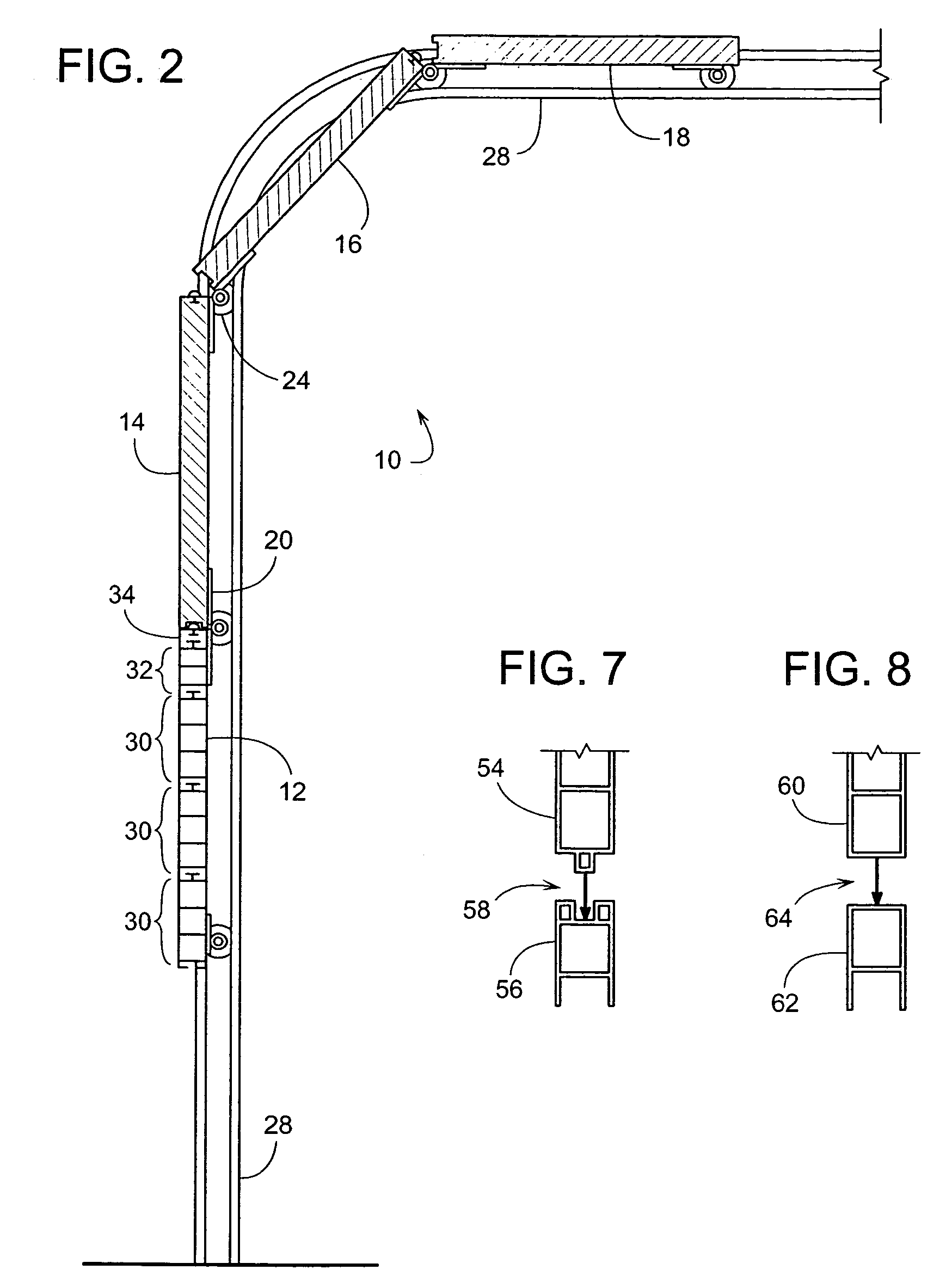Extruded door panel members
a technology of extruded panel and door panel, which is applied in the field of doors, can solve the problems of difficult to reduce the weight of the door without sacrificing its toughness, and the door can be struck by almost any type of vehicle, and achieve the effect of reducing the weight of the door without sacrificing its toughness, and avoiding the impact of sectional doors
- Summary
- Abstract
- Description
- Claims
- Application Information
AI Technical Summary
Benefits of technology
Problems solved by technology
Method used
Image
Examples
Embodiment Construction
[0045]A sectional door 10, shown partially open in FIGS. 1 and 2, includes a series of door panels 12, 14, 16 and 18 that are interconnected along their adjacent horizontal edges by hinges 20. In this description, the term, “panel” describes one of typically four or five sectional door components, each of which is generally planar and hingedly interconnected to panels above and below, except for the top and bottom panels. As door 10 opens or closes relative to a doorway 22, guide members, such as rollers 24, guide the movement of the panels along two lateral tracks 26 and 28. In this example, tracks 26 and 28 curve between horizontal and vertical; however, it is well within the scope of the invention to have tracks 26 and 28 run generally linearly or only curve slightly, so that when the door opens, the door panels move above doorway 22, but remain in a generally vertical or slightly angled orientation. To close door 10, the vertical sections of tracks 26 and 28 guide the panels to ...
PUM
 Login to View More
Login to View More Abstract
Description
Claims
Application Information
 Login to View More
Login to View More - R&D
- Intellectual Property
- Life Sciences
- Materials
- Tech Scout
- Unparalleled Data Quality
- Higher Quality Content
- 60% Fewer Hallucinations
Browse by: Latest US Patents, China's latest patents, Technical Efficacy Thesaurus, Application Domain, Technology Topic, Popular Technical Reports.
© 2025 PatSnap. All rights reserved.Legal|Privacy policy|Modern Slavery Act Transparency Statement|Sitemap|About US| Contact US: help@patsnap.com



